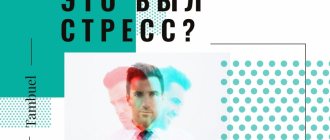Tension in the body has a bad effect on a person's condition. It leads to muscle tone, and tension in this area impairs blood circulation, body nutrition is disrupted, and energy levels decrease. At the same time, even those who understand that the body is already like stone and something needs to be done about it, do not know exactly how it can be easily and quickly relaxed. AiF.ru spoke about the consequences of constantly keeping the body in tight muscle tone and what techniques will help relieve this tension osteopathic doctor Vladimir Zhivotov.
Muscle tension
First of all, we must remember that overstrain can be physical and emotional. And when we talk about the first, we cannot ignore the second. As for physical overstrain, if the resources of the human body allow it to be compensated for, everything is fine. This is normal: we constantly experience tension in one way or another.
But, if it was strong and prolonged and exceeded the body’s capabilities, it can lead to the formation of undesirable changes in the muscles, which requires the intervention of a specialist: an osteopath or massage therapist. When changes accumulate and the body cannot cope with them, a person may be lethargic for a long time and feel a lack of energy, which affects his quality of life and productivity. In addition, pain may appear in different parts of the body.
Article on the topic
Do not be nervous! 9 ways to quickly calm down Let's not forget about stress. When we do something - work, study - while experiencing strong emotions, we aggravate the situation. Physical activity accompanied by emotional instability and stress is dangerous for the body. Therefore, remember that creating a positive emotional background has a positive effect on our health. When the body releases the right hormones for a good mood, this is an excellent prevention of physical stress.
No matter how scary it may sound, the fact remains: 95% of children receive a birth injury. Consequences that were not eliminated in childhood create an additional risk zone, in particular, for overexertion, spasms, etc. And, if this happens often, it is necessary to contact a specialist and eliminate the consequences of injuries.
What about yoga and meditation?
Yoga is one of the most popular and fashionable areas, which includes various practices that help normalize the state of the body, including the physical one. But the main task of yoga is to teach you to control your psycho-emotional state and relax. The greatest effect can be achieved if you combine yoga and meditative exercises that are aimed at working with the subconscious.
There are several basic relaxing meditative asanas that you can perform at home on your own:
Padmasana – Lotus Pose: This is one of the main asanas in yoga. Scientists consider it the most suitable pose for meditation. How to do it: sit on the floor or mat, cross your legs (your feet should be on opposite thighs and your knees should touch the floor), put your hands on your knees, keep your back straight, close your eyes and completely relax your body. The asana develops a sense of balance, relaxes muscles, leads to deep relaxation, calms the nerves and normalizes the cardiovascular and respiratory systems through slow breathing.
Siddhasana – Half Lotus: This is a simplified version of the lotus pose. Here, only one foot is placed on the thigh, and not both, as in the previous case. How to do it: sit with a straight back, bend your knees, press one foot to the perineum and to the floor, and place the other on the calf of the opposite leg, trying to reach your thigh with your fingers; Place your palms on your knees and make a circle with your thumb and forefinger; tilt your head to your chest, relax your neck and close your eyes. The benefits of this asana are identical to those of the lotus pose: the main effect is on strengthening the muscles of the back, spine and improving joint mobility.
Sukhasana: This asana is also called “Turkish pose”. Beginners are recommended to start practicing yoga with it, because... it is simpler than the asanas described above. Everything is very easy: get down on the mat, bend your left leg at the knee and press your foot to your thigh as close to your groin as possible; Bend your right leg too and place it on the floor parallel to your left and spread your knees wider.
Vajrasana: kneel down and “place” your pelvis on your heels, place your right palm on your right knee, your left palm on your left. The head, neck and spine should be in a straight line and vertical at all times. Relax your muscles, close your eyes and breathe slowly. Despite the fact that the exercise requires complete muscle relaxation, it strengthens the spine, leg muscles and makes the leg joints more flexible.
Shavasana (“dead pose”): this pose is one of the most important in yoga, because... helps achieve complete relaxation. Technique: lie on your back, stretch your arms along your body, but do not touch your body; spread your legs slightly to the sides, close your eyes and alternately relax the muscles of your arms, legs, pelvis, back, abdomen, chest and shoulders, and at the very end, relax your face and neck. You can do this exercise as much as you want, and when you come out of it, tense your muscles well and slowly stand up.
There are no contraindications for performing this asana. This is the best exercise for relaxation after mental and physical stress.
If you are new to yoga, then start with short practices: 1-2 minutes for each asana, gradually extending the time to 30 minutes [I. Kriksunova, 2018].
Yoga involves natural muscle relaxation through complete immersion in the process and achieving internal balance. If you perform asanas regularly, then a bonus to all the benefits of exercise will be the development of body flexibility.
Practice meditation before and after yoga, such as breathing exercises. This will help you relax faster. Or perform the “Ajapa-japa” (“Mantra-meditation”) technique: take a comfortable position. You can lie down or stand up, the main thing is that your back should be straight. Focus on your breathing, feel how the air passes through your nostrils or how your stomach and chest move as you breathe.
Then concentrate on the sound of air entering and leaving your nostrils. When you inhale, pronounce the syllable “so”, and when you exhale, pronounce “ham”. These sounds are similar to the natural sound of breathing. Your task is to hold the sensation of breathing, its sound, and at the same time repeat these two syllables to yourself. It is recommended to perform this practice for 5 minutes or more [M. Gorshetchenko, V. Zobnina, 2020].
By the way, have you heard anything about post-isometric muscle relaxation? The main meaning of such relaxation is a combination of isometric muscle tension (at this stage the breath is held) and their further stretching (occurs as you exhale in a relaxed state). As a result of such manipulations, hypotension is achieved - muscle relaxation.
Let's look at how to achieve post-isometric relaxation using the example of Hatha yoga asanas:
- Iliopsoas muscle: Lie on your back, bend your left knee and clasp your knee with both hands. The right leg should lie straight on the surface. As you inhale, lift your right leg off the surface for 5-7 seconds. As you exhale, lower your right leg to the floor and pull your left knee towards you.
- Gluteus maximus: Lie on your back, bend your left leg at the knee and clasp it with your hands under the knee. Place the foot of your right foot on the knee of your bent leg (the bent leg should lift off the floor surface). As you inhale, apply resistance with your right foot to your knee (no more than 7 seconds). As you exhale, pull the “structure” towards you. Repeat the technique with the other leg [Yu. Kukoleva, 2021].
You can find many video tutorials on this topic on the Internet. Look at this one for example:
Psychoisometric muscle relaxation is used not only in yoga, but also as a separate relaxation technique.
Don’t forget that the point of such practices is complete mental and physical relaxation. If you fail to “switch off” during exercise, you will not be able to achieve the desired effect.
What are the consequences?
Few people think about the consequences of muscle tension. However, they can be quite serious. So, first of all, tension in the body, which is constantly present, becomes the cause of headaches. Spasms compress blood vessels and nerve endings, disrupt blood supply to organs and impair the functioning of the nervous system. The most common spasms of the muscles of the neck and shoulders occur: this is typical for sedentary types of work. Against the background of this disorder, headaches, migraines develop, and even vision deteriorates.
Naturally, due to constant muscle tone, problems with posture develop, because muscle spasms often even change the geometry of the skeleton.
Another consequence of constant tension in the body is a malfunction of the internal organs. After all, problems develop with lymph flow and blood circulation, breathing goes wrong (it becomes shortened), the functioning of the digestive system is disrupted, etc.
And, of course, hard, tense muscles cannot stretch well. Accordingly, a person becomes inflexible, it is more difficult for him to perform some simple manipulations, etc.
To avoid the development of such complications or reduce the potential danger if they develop, it is worth contacting a specialist. Typically, exercise therapy, certain sedatives and massages are offered to relieve tension. But, if it is not possible to see a doctor “here and now,” you can help the body on your own. To do this, I recommend several methods, or better yet, all at once.
Burnt out at work? Overwork is the cause of nervous tics and depression Read more
Relaxing with breathing
One of the reasons for muscle tone is stress. The abdominal muscles respond first to stimuli. These muscles, when tense, put pressure on the diaphragm during inhalation, which leads to a lack of oxygen in the body: it simply lingers in the upper part of the lungs and does not pass further. In this state, a person feels as if he can’t breathe, begins to get nervous, panics, and his breathing quickens, which only worsens the situation.
The abdominal breathing technique allows you to relax the abdominal muscles and restore the breathing process. It helps to avoid insomnia, depression and atherosclerosis and even get rid of some types of pain. A person can restore his condition in just three inhalations and three exhalations.
To do this, just do the following exercises:
- Lie on your back, close your eyes and concentrate on your bodily sensations. Take a few breaths in and out and watch the reaction of your chest and abdomen.
- Perform a cycle of slow inhalations and exhalations, go to your breathing pace, gradually getting rid of muscle tension.
- With one hand, press lightly on your stomach and try to make your stomach lift and lower your hand. This way you will learn to regulate the air flow.
- Inhale and, counting to ten, count the number of exhalations. Repeat the exercise for ten minutes.
Belly breathing has a positive effect on the nervous system, helps relieve tension during stress, lowers blood sugar levels and improves the body's condition after exercise.
Digestion also improves, the lungs are strengthened, and during breathing exercises the heart and internal organs are massaged. But this method of relaxation is not suitable for those who have high blood pressure, and it is best to start studying breathing practice under the supervision of specialized specialists [E. Mukhina, 2019].
So why is vertical (chest) breathing considered wrong? When we breathe with our chest, as we inhale, our chest and shoulders rise, which triggers the sympathetic part of the nervous system in the body. With proper breathing, the shoulders and chest remain motionless, only the stomach is involved.
Proper relaxation and tension of the intercostal muscles and working with the diaphragm will help you take full breaths and exhales. Try to exhale so that your stomach “sticks” to your back. Feel like you've squeezed all the air out of your lungs?
To reduce stress and relax your muscles, the 4-7-8 method is great: sit up straight, touch the back of your upper teeth with the tip of your tongue, and stay in that position throughout the exercise.
Now start counting: on the count of 4, inhale calmly and quietly through your nose. On the count of 7, hold your breath and exhale until the count of 8, making some sound. The exhalation should be longer than the inhalation.
You need to take 4 full breaths at a time. You can perform this exercise whenever you want, but it is not recommended to exceed the number of breaths in the first month of practice.
Another muscle relaxation exercise, the 365 method, can be done throughout the day or in between different activities. It's very simple: breathe at a rhythm of six cycles per minute (5 seconds inhale, 5 seconds exhale) for five minutes. Do this every day for a year (hence, by the way, the name “365 method”) [Rospotrebnadzor, 2020].
A useful technique for healthy breathing was developed by Alexandra Strelnikova, an opera singer and teacher. Initially, this technique was aimed at restoring the voice and getting rid of attacks of suffocation (the singer herself suffered from them), but it also has a beneficial effect on muscle tone.
When performing breathing exercises by A. Strelnikova, the neck, abs, legs, arms, shoulders, back and pelvis are involved. Exercises have a beneficial effect on the immune system, cleanse the bronchi, improve posture and are recommended as therapy for pathologies of the chest muscles.
Breathing exercises should be performed before meals or 1-1.5 hours after a meal. It is contraindicated for those who have high blood pressure, head trauma, internal bleeding, high temperature, or weakness.
And here are the exercises themselves:
“Palms”: this is a warm-up before starting a workout. Stand up straight and open your palms as if you are showing them to someone. Lower your elbows and keep your arms away from your body. Inhale noisily through your nose and at the same time clench your palms tightly into fists. As you exhale, open your palms and relax. Repeat the exercise 4 times and rest for 3 seconds. You need to do 24 repetitions.
“Nose”: stand straight, place your feet shoulder-width apart, keep your arms along your body. Bend forward, but do not touch the floor with your hands, while inhaling loudly and briefly through your nose during the second stage of the tilt, ending at the bottom point. Get up and repeat the exercise 8 times. The bends should be light and rhythmic; you do not need to bend as low as possible. Round your back and lower your head.
“Cat”: take a half-squat position and simultaneously turn your body and arms to the right, as if you are trying to catch something, and then to the left. Exhale naturally, your knees should be half bent, and make the turns at the waist. The exercise can be performed while lying in bed or sitting on a chair.
Shoulder Hug: Stand straight and bend your elbows, raising them to shoulder height. Hug yourself by the shoulders, spreading your arms in opposite directions. With each hug, inhale and exhale sharply through your nose. It is not recommended to perform this exercise in the first week of training; it is also contraindicated for those who have heart problems.
“Big Pendulum”: stand straight, place your feet at a distance slightly narrower than your shoulders. Bend forward as if you were trying to reach the floor with your hands and inhale. Without interrupting the exercise, straighten your body, lean back, hugging your shoulders with your arms. Inhale from the floor and exhale from the ceiling. Do not pause in breathing and do not increase the pace [I. Rudevich, 2020].
We recommend watching a video where the main cycle of breathing exercises by Alexandra Strelnikova is conducted by her student, Dr. Mikhail Shchetinin:
Diagnostic methods
To determine the causes of muscle pain and prescribe the appropriate course of treatment, the doctor must take into account two factors. The doctor studies the history of the disease. He also pays attention to the symptoms of the disease. Correct identification of the causes and the optimal method of treatment are the key to successful relief from muscle pain.
In most cases, problems are caused by excessive muscle tension. It usually occurs when a person is insufficiently active (sedentary work, inactivity). It is possible that the pain is a consequence of the injury. In the first case, there is no need for radical measures (surgery). Often significant changes can be achieved with the help of a special set of physical exercises.






